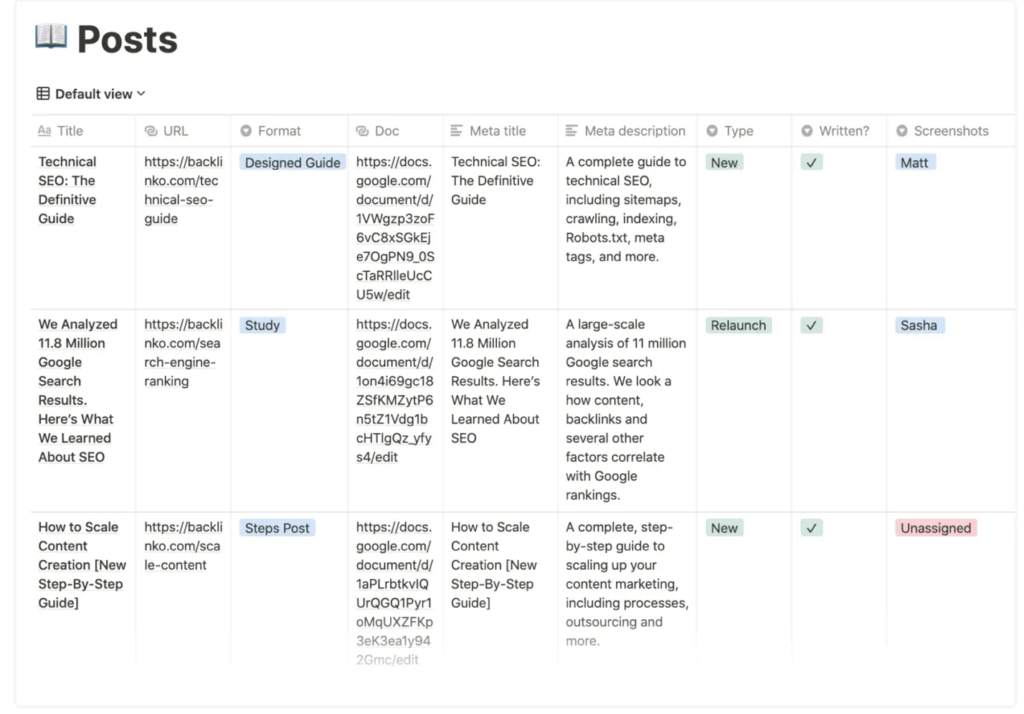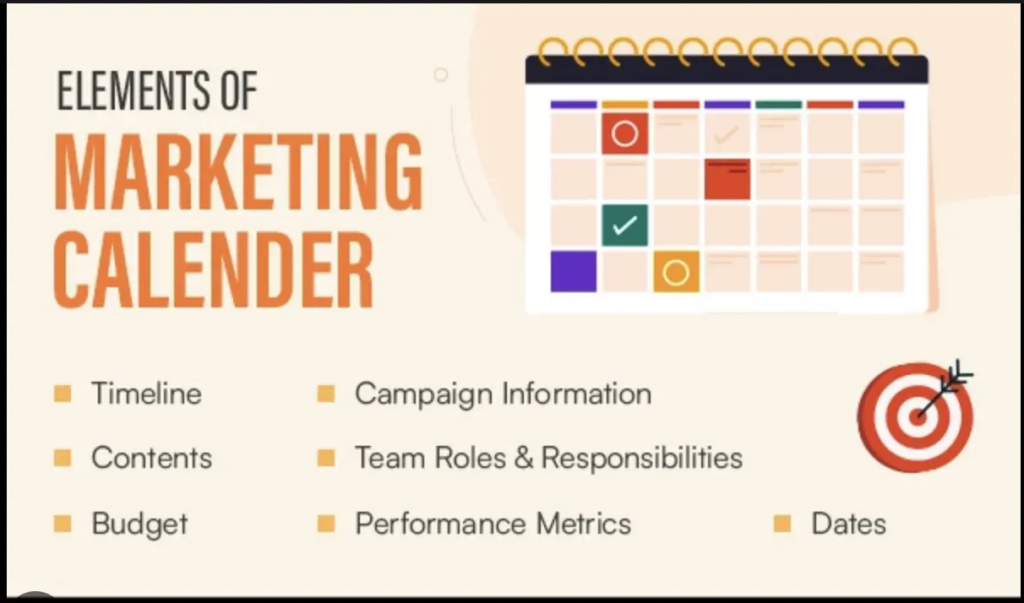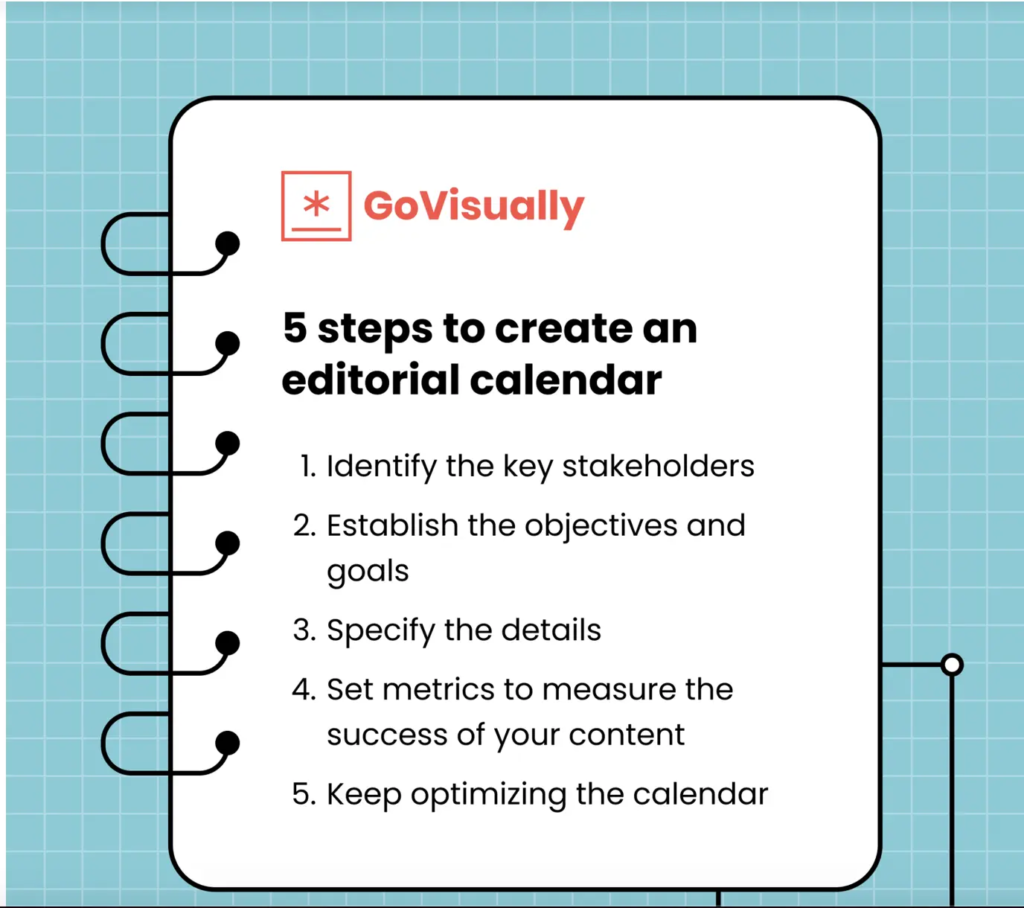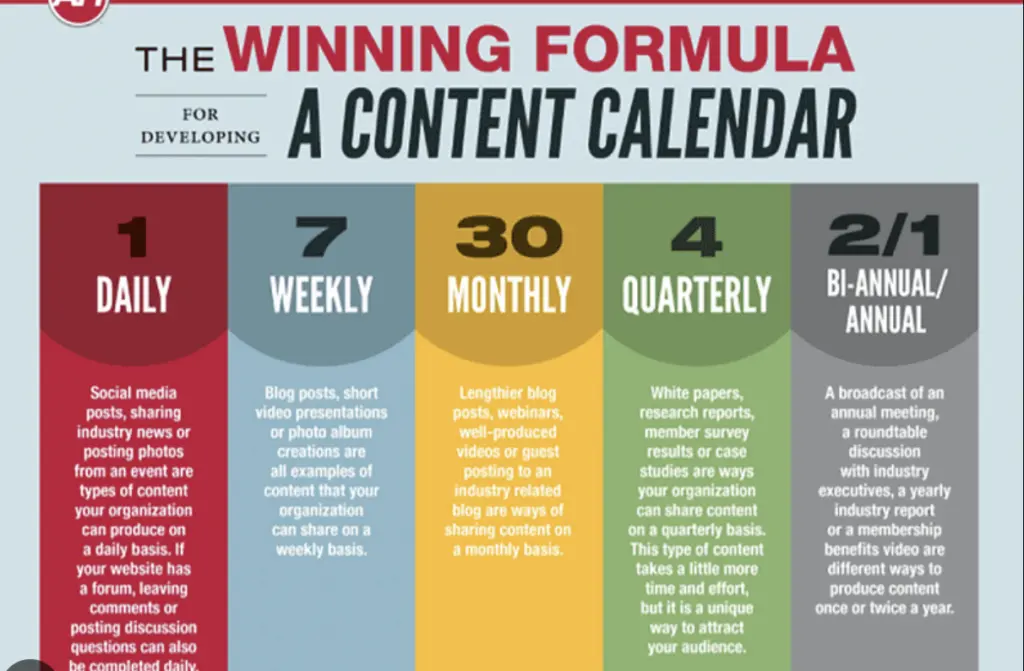
Tips and tools for organising content that will help you use content calendars to their full potential
See yourself as a wire-juggler trying to keep several balls in the air at once. Your blog articles, videos, emails, and social network posts are the balls. Each one of them is yelling for your attention and could knock you over.
As you try to keep up, you realise you need a safety net—a way to organise and plan your content creation so you can stay in balance and give your viewers a great show.
Here comes your trusted partner, the content planner. It makes sure that each piece of content appears at the right time, captivating your audience and leaving them begging for more.
But just like planning and practicing a circus act carefully, making a good content calendar takes knowledge, skill, and a bit of imagination.
This post will go over each step of making an amazing content calendar, how it may help you produce material, and how to make one that will keep your readers glued to their screens.
Something with content, perhaps?
One strategic planning tool that helps businesses plan, schedule, and track the content they create and post on different media and platforms is a content calendar.
Being at the core of all content-related activities, it guarantees that the right information gets to the right people at the right moment.
Content calendars can be made in a number of ways depending on the needs and tastes of the business.. Often used formats are those that are listed here:
1. Sheets of paper
Many businesses create their content strategy using one sheet Excel or Google Sheets. Spreadsheets simplify, adapt, and cooperate content organizing and monitoring.
2. Freeware and utilities
One may build a content schedule with numerous tools and programs, such as Trello, Asana, and CoScheduler. Many times, these systems come with extra features like analytics, workflow automation, and team collaboration.
3. Tools for project management
Several companies connect their content strategies to project management systems like Monday.com or Jira in order to make content development fit with other business goals and projects.
In whatever form, a well-designed content schedule often consists of the following essential components:
- The primary subjects and concepts: that the content will cover should be listed in the schedule. In this manner, the material may be guaranteed to correspond with the objectives of the company and the interests of the intended readership.
- Content formats: This section tells the program what kind of content—blog entries, movies, podcasts, infographics, and social media postings—to create.
- Calendar dates and times: The calendar should list the publishing dates of each piece of content, taking into account things like the availability of the target audience, platform best practices, and general content periodicity.
- Distribution networks: This section lists the websites and other media sources—such as the corporate website, social media accounts, email newsletters, and publications from other companies—where the content will be distributed.
- Those on the team with accountability include: Every team player should have their tasks and responsibilities listed on their calendar. On this basis, each member of the team is aware of their responsibilities and the deadline for finishing them.
- Monitoring development: Every item of content should have a mechanism in place to monitor its development from idea generation to posting and promotion. This will make sure that everyone works together smoothly and that everything gets done on time.

These parts work together to make a content plan that is organised and flows well by:
- A content calendar helps make sure that all of your material and channels have the same voice, look, and message for your brand.
- A calendar’s broad perspective of the entire content pipeline facilitates planning, resource allocation, and identifying gaps or overlaps in the content strategy.
- Every stage of the content creation process is defined by a unified content strategy, which promotes collaboration and communication.
- A content calendar painstakingly arranges content themes and topics so that the content strategy fits with the overall goals of the business and the demands of the target audience.
Application of a content plan provides benefits.
An structured content calendar may help any size or sector of business.It guarantees, first, consistency in the production and delivery of commodities.
Through advance planning of subjects, themes, and forms, companies maintain a consistent flow of material that adheres to brand rules. This provides credibility and confidence to their viewers.
Because a content calendar combines all content-related work into one location, it simplifies planning and management.
Teams that succeed in this fill up content gaps, optimize the use of resources at their disposal, and seize chances like industry events or seasonal trends.
A content schedule facilitates communication and teamwork. Timeliness and uncertainty are avoided by well defined roles, duties, and deadlines; integrated collaboration technologies expedite work and guarantee better quality.
A carefully designed content calendar helps to make it easy to confirm that the content strategy is in line with the company’s goals and objectives. It effectively reaches the right audience, raises awareness of the brand, and introduces new products.
Lastly, a content schedule saves time and makes work more efficient by preventing last-minute scrambles and making it easier to batch and reuse content.
A content schedule is an effective way to make sure that content creation is consistent, organised, collaborative, aligned, and time-efficient.Profiting from these advantages, companies may provide timely, relevant, and high-quality content that promotes expansion and success.
Important elements of a content strategy
1. Types of content
Information about the content categories Calendars should contain a range of information in several formats to satisfy the requirements of various platforms and the preferences of the users. Customary information categories consist of:
- Blog entries are written pieces of information or addressing particular topics.
- Social media posts are brief, interesting updates meant to be used on particular websites like Twitter, Facebook, Instagram, and others.
- Everything from interviews and behind-the-scenes footage to product demonstrations and how-to guides can be included in a video.
- Images that offer readily understood and distributable data or information are called infographics.
- Regular updates delivered directly into subscribers’ inboxes are known as email newsletters. Promotions, business news, or well selected content are often included.

2. When and where to print
Figuring out the best time to post content is essential for getting the most views and comments.
When planning when to post content, you should think about things like the age range of your viewers, their location, and the platform’s analytics. Using tools like tracking software or social media management platforms can help you figure out when people are most likely to interact with each platform.
3. Themes and ideas for content
Content plans should list the main ideas and subjects that will be talked about within a certain amount of time. In this way, material stays relevant to the audience, fits with the organization’s goals, and doesn’t get duplicated or inconsistent. Finding out about popular topics, news in your business, and what your audience is interested in can help you plan and come up with content ideas.
4. Audience and tools to reach
It’s important to know the demographics, tastes, and behaviours of the target audience in order to make content that really speaks to them.
Calendars of content should include a list of the platforms on which each piece of content will be released, considering the functionality of each and the expectations of the viewers. Material created for LinkedIn and TikTok, for instance, could have different forms and styles.
5. Members of the team in charge of their tasks
Setting up roles and responsibilities helps everyone collaborate on the content development process and ensures accountability. It should be evident from content calendars who is responsible for writing, editing, publishing, and authorizing each piece of material.
Collaboration technologies that can facilitate teamwork and progress tracking include project management software and spreadsheet sharing.
6. Monitoring developments and providing comments of status
Regular monitoring of the development of content production initiatives is crucial to identify issues, modify plans, and achieve objectives.
It should be possible to monitor the status of each piece of content at all times using content calendars, such as task completion percentages, review phases, or milestone dates. This facilitates teamwork, priority-setting, and open communication during the entire material-making process.
Businesses can make content creation easier, ensure consistency across all media, and engage with their target audience by include five crucial components to a holistic content calendar.
Furthermore, regular review and modification of the content calendar should be done in response to performance statistics and user comments. It will therefore continually be improving and adjusting to shifting market conditions and audience preferences.
Content Calendar Creation
To ensure that the content you produce aligns with the objectives of your business, speaks to your audience, and is routinely distributed through the appropriate channels, creating a content calendar calls for a number of deliberate actions.
Prior to beginning any writing, it is crucial to establish precise aims and objectives that complement your overall marketing plan.
Among these objectives are increasing brand awareness, increasing website traffic, generating new leads, and maintaining satisfied existing clients.
Knowing your goals will enable you to ensure that your content plan supports your achievement of them. See this detailed tutorial to create a content schedule:
1. Analyze gaps and verify content.
Examine the material pieces you now own and give them ratings based on how well they function, are current, and align with your objectives. Look for any gaps or areas that need some attention that fresh material might fill.
See what sorts of content work best and what your audience is most interested in by looking at metrics like engagement rates, traffic sources, and conversion rates.

2. conceive content themes and concepts
Get opinions on content ideas and themes from those who really matter, such as marketing teams, subject matter experts, and those who deal directly with customers.
Look at keyword data, industry trends, consumer pain areas, and often asked questions to generate a variety of content ideas that suit the needs and interests of your target audience.
Having a list of ideas, you should assess them according to how well they support your objectives, how simple they are to implement, and how they might impact your audience.
This procedure will enable you to ensure that the material in your calendar is engaging and of high caliber and aligns with your overall marketing strategy.
6. Content Calendar Templates and Tools
Content calendar organisation and management can be aided by a multitude of tools and templates. Any size team, with any process, and with any personal preferences can use these. Themes and tools for the content calendar are fully listed here:
1. Google Sheets templates
One adaptable tool for creating your own content plans is Google Sheets. Simple monthly calendars to more in-depth writing calendars can all be downloaded as pre-made templates.
Columns for content kind, release dates, allocated team members, progress updates, and other information can be added by users to these templates.
Because Google Sheets enables real-time collaboration, team members may access and modify the content calendar from any location with an internet connection.
2. Excel Printable Templates
Having many of the same capabilities as Google Sheets, Microsoft Excel is another well-liked option for content calendar management.
Usually, Excel content calendar templates have editable rows and columns that allow you to arrange information according to date, theme, format, distribution channel, and team member in charge.
By adding formulas, macros, and conditional formatting, users may automate and simplify tasks. For groups accustomed to using Microsoft Office products, Excel’s robust feature set and user-friendly design make it a suitable option.
3. Pinterest Boards
Trello is a board, list, and card-based visual project management software for organizing tasks and workflows. For displaying their content calendars, content teams can create their own Trello boards. Lists labeling “ideas,” “in progress,” “scheduled,” and “published” can be included to each board to display various phases of the content development process.
Title, description, due date, attachments, and team members in charge of that item can all be included on a card. Setting priorities and checking on progress is made easy with Trello by the drag-and-drop capability.e responsible for that material. The drag-and-drop feature in Trello makes it simple to set priorities and see how things are going.
4. Printable Asana Templates
Asana is a full project management solution with content planning and execution templates included. Users can create their own, tailored content scheduling templates or choose from a variety available.
Asana templates typically include sections for editorial calendars, task assignments, due dates, and progress reports in addition to content ideas. For more effective content processes, Asana enables teams to collaborate, communicate, and link to other platforms and applications.
5. Plan together
Professional content marketing platform CoSchedule combines a content calendar with social media scheduling, result tracking, and teamwork features.
Plan and schedule content for blog posts, social media postings, email newsletters, and other channels using its drag-and-drop calendar interface.
CoSchedule offers features including workflow automation, job assignment, performance tracking, and customized reporting to make content marketing easier and yield greater results.
6. Master Hootsuite Planner
Although Hootsuite is mainly recognised as a social media management tool, its Planner feature may also be used as a content calendar to schedule and arrange social media postings.
Users of Hootsuite’s Planner can create content plans including the dates, hours, platforms, and kinds of material that will be released for each post. Working with others, gathering material, monitoring results, and integrating with other marketing tools are all made easier with Hootsuite.
With so many features and advantages, it’s critical to choose a content calendar tool or template that best suits the requirements, preferences, and budget of your team.
Whether you use a basic spreadsheet template or a sophisticated project management system, a well-organized content calendar can enable you to plan your content more effectively, improve teamwork, and achieve greater outcomes from your content marketing.
Calendar of content management techniques
A content program needs careful preparation, adaptability, teamwork, and an ongoing commitment to improvement. These pointers will facilitate content plan management:
- To maintain consistency, make sure your content aligns with your marketing efforts, and optimize your resources, schedule when you will write and post.
- As your market, audience preferences, and corporate goals shift, be adaptable to accommodate last-minute adjustments and unanticipated content opportunities.
- Examine your content calendar frequently, review success metrics, and adjust as needed to reflect new data and trends.
- When people on a team talk to each other, they can get ideas, make sure those ideas are in line with the goals, and get feedback on how to do better next time.
- Figure out how to make each channel’s success data more useful, then change your content plan to fit.
- Use high-performance materials on many different systems and in many different ways to extend its lifespan. It will therefore require fewer resources, function better, and be valued more as a result.

Make a social media and material calendar.
Your content needs to be connected to your social media strategy if it is to be most successful, fully engage your audience, and make real money. Below is all the details you need to make sure your content schedule and social media plan work in concert:
Should you have a strong social media strategy and content plan, all of your platforms will have the same corporate voice and message.This allows consumers to easily find your brand.
Coordination of information across several channels allows you to reach the largest audience and enhance their interaction with your content by leveraging the best features and viewing patterns of each channel.
Join your social media plan to your content schedule to better plan and carry out your tasks and avoid having to rush at the last minute or redo the same job.
If you want to write social media posts that actually engage your audience, you have to know their interests, hobbies, and talents.Adding new content and formats is an excellent approach to keep your social media feed relevant and updated.
Create a regular posting schedule based on the optimum times to publish on each network to stay in touch with your audience.
If you plan your social media posts as part of a bigger content plan, more people will see and hear your message. You can add links to other blog pages, videos, and other things in your posts.
New things, events, or projects keep people interested and up to date on social networks.Share your movies, blog entries, and other stuff on social networking. Both more people will see them and they will become more useful.
Make sure the purposes and advantages of every social networking site are met by your postings. For every site, you must produce fresh material and update existing material to maintain the same tone, style, and content requirements of your audience.
Main Ideas
A great content calendar should start with the kind of material you will produce, when and where you will produce it, the issues and problems you will cover, the audience you want to reach, the team members who will be in charge of what, and a method of monitoring and making changes.
Making a content plan is simple, but labor-intensive! Choose formats and media, organize, assign work, and locate the appropriate templates or other support resources. Just as crucial as knowing what you want to accomplish with your content is reviewing your present offerings.
Users of Asana, Hootsuite Planner, Google Sheets, and other products and themes do this. In various ways, all of these can assist you to arrange and monitor your information.
You should be free to make frequent topic plan changes.Be not afraid to adjust things to see what suits you the best. Also, keep an eye on how well your content does.
Plans and times for social media need to match up! Take the time to work on different devices and stick to your plan.
That plan for your topic should be used and changed a lot. It makes sure that your content fits the goals of your business and the people you want to reach. It also makes sure that making content is quick and easy, and that your brand and words are the same everywhere.
This is the time, if you haven’t already, to construct a content plan. You will be better equipped to plan and prepare like a boss, work and communicate with your team more successfully, and optimize your content marketing.
Considering everything, content calendars are essential to successful content marketing. It maximizes your knowledge wherever you are and maintains your focus and organization. You’re going to wait how long? Get to work developing your own content strategy right now. The content marketing idea you have will not work out!
FAQs
1. Creating a content calendar: how do you?
Companies that plan, arrange, and monitor the content they create and distribute on various media and platforms might use a content calendar as a strategy planning tool. All work connected to content has as its primary objective ensuring that the appropriate information reaches the appropriate people at the appropriate time.
What are the most important parts of a content calendar?
A well-planned content calendar includes topics and themes, types of material, posting dates and times, platform(s) and audience(s) you want to reach, accountable team members or contributors, and means for monitoring and reporting on your progress.
What could you do with a content calendar?
Content schedules help operations run more smoothly, teams work together and talk to each other, time is better managed, and content strategy is more in line with business goals and objectives. They also promise that information will always be made and sent out.
Write down some ideas, sure.
Prior to organizing your content, see what has to be done. Ideas for material should then be considered, along with medium and formats, sharing dates, role and responsibility assignments, and process management templates or tools.
How can I make my content plan work better?
It’s important to plan ahead, be flexible, and regularly assess the usefulness of your content. You should also encourage teamwork and open communication, keep an eye on key performance indicators, and reuse content that works.












